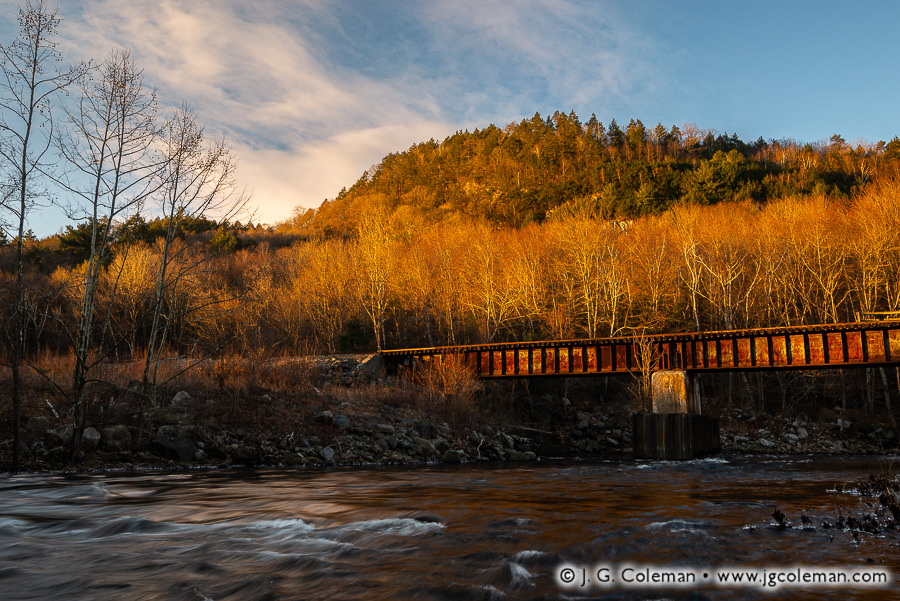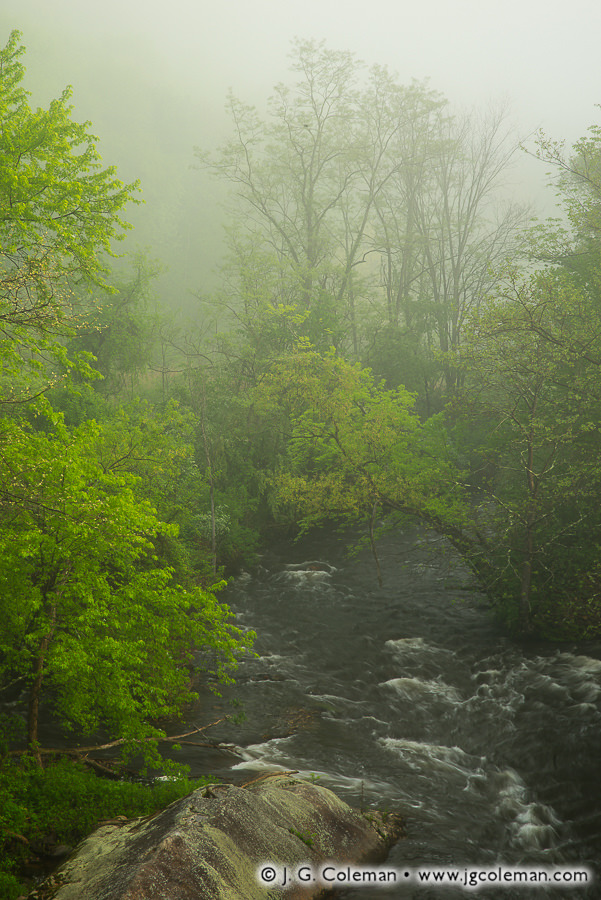The Jericho Bridge, its weathered girder frame showing all 112 years of its age, spans the shadow-laden waters of the Naugatuck River amidst the wooded hills in Thomaston. Although it’s January in the valley and shelf ice is forming along the river banks, the molten light of dawn imparts the comforting illusion of warmth.
It’s difficult to overstate how big railroads used to be in Connecticut: not just in terms of their sprawl throughout the state, which was impressive, but in terms of the degree to which they dominated transportation. When the Jericho Bridge was built in 1907 to carry a line of the New York, New Haven & Hartford Railroad over the Naugatuck, it was just one, tiny facet of an immense railroad monopoly that would’ve seemed virtually infinite in its influence and power.
And yet, before Jericho Bridge had even a spot of rust, things were to begin slowly changing for the once-untouchable railroad giant. In time, the rise of automobiles and the subsequent development of highways changed the way we traveled, changed the way we transported goods and changed our society, in general. The Golden Age of the Railroad was arguably over by the 1920s and 1930s… though the industry struggled forth even as its eventual demise grew ever more imminent. All the Northeastern railroad titans just slowly fizzled away over decades of steady decline; most were ghosts of their former selves by the 1960s and 1970s, if they hadn’t thrown in the towel altogether. Remarkably, the Jericho Bridge and the Naugatuck line is still active to this day, though I can’t think of a time I’ve ever seen a single car on its tracks.
Purchase a Fine Art Print or Inquire About Licensing
Click here to visit my landing page for “Jericho Crossing at Thomaston” to buy a beautiful fine art print or inquire about licensing this image.
Want to See More?
Be sure to check out more of my work from Thomaston, Connecticut.






